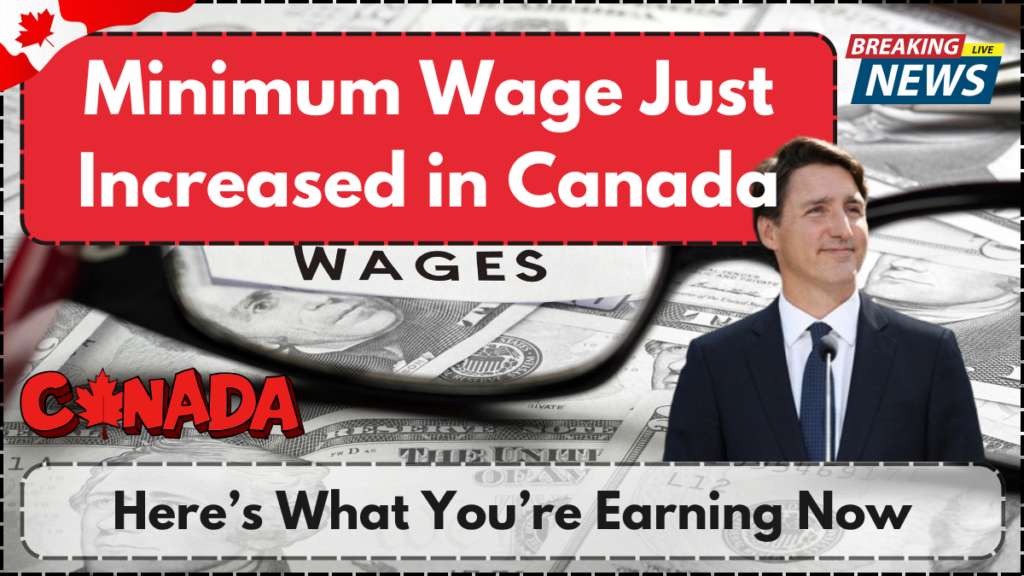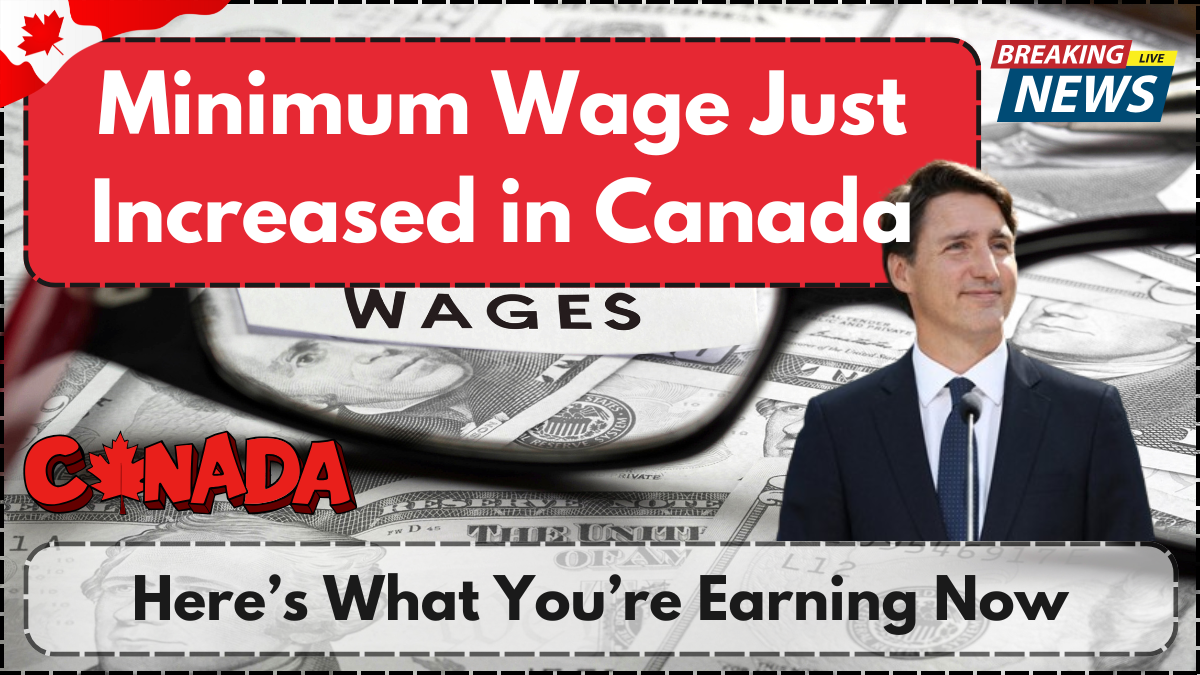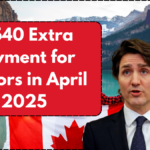Starting May 1, 2025, employees across Canada began receiving higher pay as the federal government and multiple provinces introduced updated minimum wage rates. These changes are part of the annual wage review process, which ensures compensation keeps pace with the cost of living and inflation trends.
The annual review aligns minimum wage rates with the Consumer Price Index (CPI), helping workers maintain their purchasing power in an economy where costs continue to climb. Provinces have the autonomy to set their own rates, but if a local rate falls below the federal minimum, the federal standard prevails for federally regulated sectors.

What Is the Minimum Wage and Why It Matters
Minimum wage is the legally mandated lowest hourly rate that employers can pay their workers. Its purpose is to safeguard low-income earners, support a basic standard of living, and protect against wage exploitation. The rate is periodically updated to mirror current economic conditions, especially inflation.
In 2025, wage adjustments are particularly significant due to the ongoing effects of inflation, rising rent and housing costs, and increased consumer prices for essentials like groceries and transportation. For millions of Canadian workers — especially in retail, service, and hospitality — these changes directly affect household budgeting and quality of life.
Federal Minimum Wage Effective May 1, 2025
As of May 1, 2025, the federal minimum wage increased from $17.30 to $17.75 per hour, marking a 2.4% rise. This applies to workers employed in federally regulated industries such as:
- Air transportation
- Railways
- Banks and financial institutions
- Postal and courier services
- Telecommunications
Where provincial wages are higher than the federal rate, the local standard takes precedence.
Breakdown of Provincial and Territorial Minimum Wage Updates (May 2025)
The table below outlines changes effective May 1, 2025, and future scheduled increases for select provinces:
| Province/Territory | Previous Rate | New Rate (May 1, 2025) | Scheduled Increase (2025) |
|---|---|---|---|
| Federal (All Regions) | $17.30 | $17.75 | N/A |
| New Brunswick | $15.30 | $15.65 | N/A |
| Newfoundland & Labrador | $15.60 | $16.00 | N/A |
| Nova Scotia | $15.00 | $15.70 | $16.50 on October 1, 2025 |
| Yukon | $17.59 | $17.94 | N/A |
| British Columbia | $17.40 | No change | $17.85 on June 1, 2025 |
| Manitoba | $15.80 | No change | $16.00 on October 1, 2025 |
These wage adjustments are designed to reflect each region’s economic situation and cost of living, providing targeted support to workers in lower-income brackets.
Why Annual Adjustments Are Critical in 2025
Tying wage updates to inflation ensures that the real value of workers’ earnings doesn’t diminish over time. With inflation still affecting Canadian households in 2025, this mechanism is essential for:
- Helping students, part-time employees, and entry-level workers stay afloat
- Preventing wage stagnation in high-cost areas
- Encouraging economic participation by ensuring that work remains financially viable
In many sectors like food service, retail, and caregiving, minimum wage workers form the backbone of day-to-day operations. Increasing their pay boosts morale, productivity, and consumer spending.
Upcoming Minimum Wage Changes Later in 2025
Several provinces have already confirmed future increases that will take effect later this year:
- British Columbia: $17.85 minimum wage starting June 1, 2025
- Manitoba: $16.00 minimum wage from October 1, 2025
- Nova Scotia: $16.50 minimum wage as of October 1, 2025
Employers in these provinces should plan accordingly, ensuring compliance by updating payroll systems and communicating changes to employees in advance.
Conclusion
Canada’s minimum wage adjustments in 2025 reflect a growing commitment to ensuring that working Canadians can keep pace with inflation and rising costs. As wages increase across federal and provincial lines, employees benefit from improved financial stability, while businesses must adapt to new compensation requirements. Regular annual reviews remain an important tool for maintaining fairness in the labor market and strengthening economic resilience.
FAQs About Canada’s Minimum Wage Updates
What is the current federal minimum wage in Canada?
As of May 1, 2025, the federal minimum wage is $17.75 per hour.
Which industries fall under federal minimum wage rules?
Industries like banking, air transportation, railways, telecommunications, and postal services are federally regulated and must follow the federal wage rate.
Do provinces have to follow the federal minimum wage?
Only for federally regulated industries. For all other jobs, the provincial or territorial rate applies. If a province offers a higher minimum wage than the federal rate, the higher wage must be paid.
Will more provinces raise their minimum wage in 2025?
Yes. British Columbia, Nova Scotia, and Manitoba have scheduled additional increases later in 2025.
How are minimum wage increases determined?
They are usually tied to the Consumer Price Index to reflect inflation and changes in the cost of living.
For More Information Click Here
Pari is a passionate writer known for captivating stories that blend imagination and reality. Inspired by travel, history, and everyday moments, Pari crafts narratives that resonate deeply with readers.




